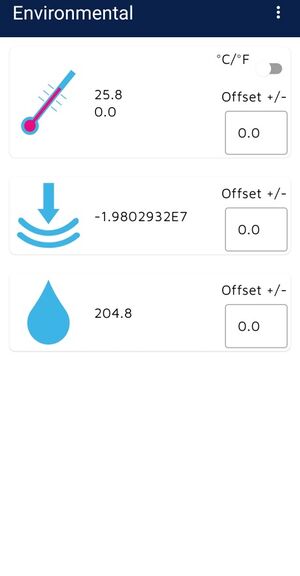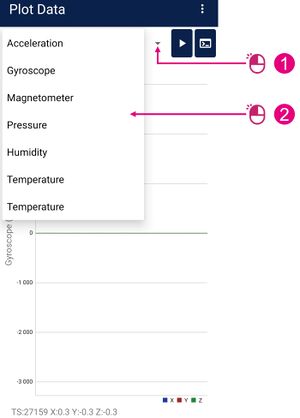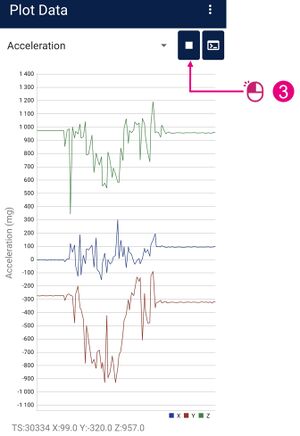1. Introduction
Welcome to the B-WBA5M-WPAN wiki page, which introduces out-of-the-box demo, and showcases the capabilities of our product.
This page guides the user through the initial setup of the product and demonstrates how to easily explore its features. It also provides insights on how to customize and develop user applications.
Explore the full potential of the B-WBA5M-WPAN with this comprehensive demo guide, covering everything from basic setup to advanced programming.
| OOB WBA5M Board package |
|---|
The B-WBA5M-WPAN provides an affordable and flexible way for users to try out new concepts and build prototypes with the STM32WBA5M module based on the STM32WBA5 microcontroller, with the selection of various combinations of performance, power consumption, and features.
The B-WBA5M-WPAN requires a separate probe, as it does not integrate the STLINK-V3E debugger.
The B-WBA5M-WPAN includes the STM32WBA comprehensive software HAL library, and various packaged software examples available with the STM32CubeWBA MCU Package.
2. Setup
Use an USB type C cable to power the STM32WBA Connectivity Expansion Board B-WBA5M-WPAN, and launch the demonstration application:
| B-WBA5M-WPAN setup |
|---|
3. Hands on
3.1. Application interface
To start using the B-WBA5M-WPAN board, an interface for communication and interaction is required.
Two application interface solutions are:
- ST BLE Sensor, available on IOS and Android
- ST Web Bluetooth® App Interface[1], running on a compatible web browser
| OOB WB5M system presentation |
|---|
Using one these two solutions allow to communicate with a Bluetooth® LE board, and establish a connection.
The Android application ST BLE Sensor is used for the rest of the demonstration.
3.2. Let's get started
Make sure the board is powered and running.
Open the ST BLE Sensor application.
The WBA5M_XX board should now appear on the homepage. Note that the Bluetooth® Device Address and the RSSI are stated just below. Click on the WBA5M board to connect. If the board doesn't appear on the homepage, click on the refresh button at the bottom.
| Connection to the B-WBA5M-WPAN board with ST BLE Sensor App |
|---|
3.2.1. Homepage
Here is the main page where are located all the features implemented with the embedded application.
Here are all the implemented services:
- BLE Sensor (Environmental / Plot Data)
- p2pServer (Led Control)
- HeartRate
| ST BLE Sensor Features Page |
|---|
3.2.2. Environmental and motion Sensors
This section introduces sensors panel.
For the environmental part, it is possible to find the temperature and the humidity measured by the sensor of the WBA5M.
Click the button in the top right to switch between units, from degrees to Fahrenheit.
| Environmental Sensor |
|---|
Regarding the Plot Data tab:
| Motion Sensor (1/2) |
|---|
| Motion Sensor (2/2) |
|---|
4. What's next?
Once familiarized with the B-WBA5M-WPAN and its out-of-the-box demo, it's time to take the experience to the next level. This section introduces where to find available code, how to flash the user code onto the board, and how to develop applications.
4.1. How to program the WBA5M board?
The basic way to support an external debug tool is to connect the external STLINK-V3SET[2] debugger tool:
- to the debug connector CN3 of the MB1868 and,
- to a PC with a USB connector, as displayed below.
| Connecting an external debug tool to program the CEB MB1868 |
|---|
4.2. Start developing an application
The STM32CubeWBA MCU Package[3] provides software components running on STM32WBA Series MCUs.
For all examples provided within the package, the following integrated development environments are supported:
- STMicroelectronics integrated development environment for STM32 products (STM32CubeIDE)
- IAR Systems® IAR Embedded Workbench® for Arm® (EWARM)
- Keil® Microcontroller Development Kit (MDK-ARM)
The Firmware Package for the STM32WBA series is also available on STM32CubeWBA GitHub[4].
To learn more about the STM32WBA Series MCUs or to go further based on available applications, click here.
5. References








